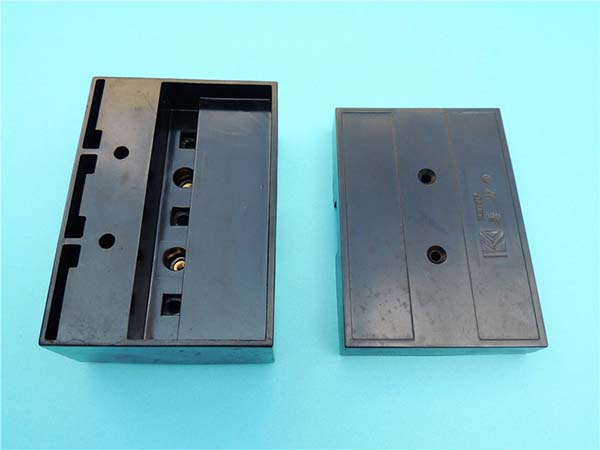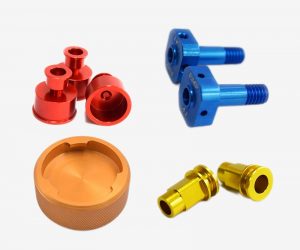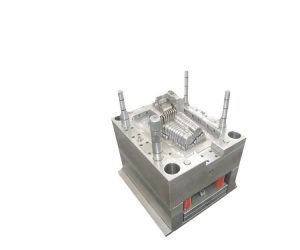Introducción
In the fast - paced world of technology, developing effective solutions to meet user needs is a constant challenge. The concept of a "prototype solution" has emerged as a powerful tool in this regard, serving as a preliminary model that encapsulates the core features and functionality of a final product or system. It acts as a tangible representation of ideas, allowing stakeholders to visualize, test, and refine concepts before full - scale development.
For instance, in software development, a prototype can be a basic version of an application that showcases its user interface, key interactions, and fundamental functions. In hardware engineering, it could be a mock - up of a device, demonstrating its form factor, physical controls, and basic operational capabilities. This not only helps in validating the technical feasibility of an idea but also in gathering early feedback from end - users and clients.
The significance of prototype solutions lies in their ability to bridge the gap between abstract concepts and concrete implementation. They enable developers to identify potential issues, such as usability problems, technical bottlenecks, or design flaws, at an early stage. This early detection can save substantial amounts of time, resources, and costs that would otherwise be wasted in later development phases. Moreover, prototypes facilitate better communication among team members, clients, and other stakeholders. They provide a common reference point, making it easier to discuss, understand, and agree on the direction of a project.
In the following sections, Yigu Technology will explore the various aspects of creating, testing, and refining prototype solutions, along with real - world examples and best practices, to illustrate how this approach can lead to the development of more successful, user - centric products and systems.
Applications of Prototype Solution in Different Fields
In the Tech World
Hardware Development
In Yigu Technology hardware development, prototype solutions are equally important. Take the development of a new smartphone as an example. The first step might be to create a physical mock - up, which is a form of prototype. This mock - up could be made of 3D - printed materials and might not have full functionality but can showcase the device's form factor, size, and the placement of physical buttons and ports.
A well - known electronics company, when developing a new tablet, created multiple prototypes. The initial prototypes were mainly focused on the design and ergonomics. They tested how comfortable the device was to hold and whether the screen size was suitable for the target users. As the development progressed, more functional prototypes were created. These prototypes included the actual hardware components, such as the processor, battery, and display. By testing these prototypes, the company was able to optimize the battery life, improve the performance of the touch - screen response, and ensure the overall stability of the device. This iterative process of prototyping reduced the risk of product failure in the market and led to a more successful product launch.
In Product Design
Consider the design of a new fitness tracker. The product design process often starts with a concept. A prototype solution helps to transform this concept into a tangible form. Designers might first create a low - fidelity prototype, which could be a simple cardboard model. This cardboard prototype allows them to visualize the size and shape of the device and how it would fit on a user's wrist.
As the design evolves, a high - fidelity prototype is developed. This might be a 3D - printed model with some basic functionality, such as the ability to track steps and display time. By testing this prototype with potential users, the design team can gather valuable feedback. For example, users might comment on the comfort of the strap, the readability of the display, or the ease of use of the buttons. A case study of a popular fitness tracker brand showed that through the use of prototypes, they were able to make significant design improvements. After the first round of user testing on the prototype, they changed the shape of the device to make it more ergonomic, improved the contrast of the display for better visibility in sunlight, and simplified the button layout. These changes were made possible because of the insights gained from the prototype testing, and they contributed to the product's success in the market, with sales increasing by 40% in the first year compared to their previous model.
In Business Process Optimization
Businesses can also benefit greatly from prototype solutions when it comes to optimizing their operations. For example, a manufacturing company might want to streamline its production process. They can create a prototype of a new production line layout using simulation software. This software - based prototype can simulate the flow of materials, the movement of workers, and the operation of machines.
By running different scenarios on the prototype, the company can identify bottlenecks in the production process. In one case, a furniture manufacturing company used a simulation prototype to analyze its production line. They found that a particular machine was causing a bottleneck as it had a longer processing time compared to the other machines in the line. By re - arranging the production line layout in the prototype and re - allocating tasks, they were able to increase the overall production efficiency by 25%. This improvement was then implemented in the actual production line, resulting in cost savings and increased output.
In the service - based industry, a bank might use a prototype solution to optimize its customer service process. They could create a prototype of a new online banking interface or a new in - branch service 流程. Through user testing of these prototypes, they can identify areas for improvement, such as reducing the number of steps in a transaction process or making the information on the website more accessible. This can lead to increased customer satisfaction and potentially more business for the bank.
The Process of Developing a Prototype Solution
Step 1: Problem Identification and Analysis
The first and foremost step in developing a prototype solution is to accurately identify the problem at hand. This requires a deep - dive into the user's or client's requirements, pain points, and the overall context in which the problem exists.
One effective way to identify the problem is through interviews. For Yigu Technology example, when developing a prototype for a new e - commerce platform, the development team could interview potential customers, existing merchants, and customer service representatives. By asking open - ended questions such as "What are the biggest challenges you face when using current e - commerce platforms?" or "What features do you wish were available on these platforms?", the team can gather a wealth of qualitative data.
Surveys can also be a valuable tool. A well - designed survey can reach a large number of people and collect quantitative data. For instance, a software company looking to create a prototype of a new project management tool could distribute a survey to project managers across different industries. The survey could include rating - scale questions about the importance of features like task tracking, resource allocation, and team communication.
Once the problem has been identified, in - depth analysis is crucial. This involves breaking down the problem into smaller components and understanding the relationships between them. Root - cause analysis techniques, such as the 5 Whys method, can be extremely helpful. For example, if the problem identified is that users are abandoning an online shopping cart, the first "Why" could be "Why are users abandoning the cart?" The answer might be "Because the shipping costs are too high." Then, the second "Why" could be "Why are the shipping costs high?" And so on, until the root cause, such as inefficient logistics partnerships or inaccurate cost - calculation algorithms, is uncovered. This analysis forms the foundation for the rest of the prototype development process, as it ensures that the solution being developed actually addresses the core problem.
Step 2: Concept Generation and Design
After analyzing the problem, the next step is to generate concepts for the prototype solution. This is a creative phase where the development team brainstorm ideas on how to solve the problem. Brainstorming sessions can involve all stakeholders, including developers, designers, and end - users if possible.
For example, in the case of the e - commerce platform, the team might come up with concepts like integrating artificial intelligence - based product recommendations to encourage users to complete their purchases, or creating a one - click checkout option to simplify the payment process. During this phase, no idea should be dismissed as too far - fetched, as the goal is to generate a wide range of potential solutions.
Once a set of concepts has been generated, the design phase begins. The design of the prototype should follow certain principles. Usability is a key principle. The prototype should be easy to use and navigate, with a clear and intuitive user interface. For a mobile application prototype, this might mean using large, easy - to - tap buttons and a simple, linear navigation flow.
Scalability is another important principle, especially for software - based prototypes. If the final product is expected to handle a large number of users or transactions, the prototype should be designed in a way that can be easily scaled up. For example, using a modular architecture in software design allows for easier addition of new features and handling of increased loads in the future.
To create the design, various tools can be used. In software design, wireframing tools like Balsamiq can be used to create low - fidelity mock - ups of the user interface. These wireframes show the basic layout of screens, the placement of elements, and the flow of user interactions. For hardware prototypes, 3D modeling software such as Autodesk Inventor can be used to create virtual models that can be further refined before physical prototyping.
Step 3: Building the Prototype
The actual construction of the prototype is a hands - on process that involves using specific technologies, tools, and materials depending on the nature of the solution.
When it comes to hardware prototypes, the choice of materials is important. For a simple mechanical device prototype, materials like 3D - printable plastics such as ABS or PLA can be used. These materials are relatively inexpensive and easy to work with. For more complex hardware prototypes, such as those involving electronics, components like microcontrollers (e.g., Arduino or Raspberry Pi), sensors, and actuators are used.
During the building process, challenges are bound to arise. For software prototypes, compatibility issues between different libraries or frameworks might occur. For example, a particular JavaScript library used for creating interactive charts might not work well with the overall application architecture. To solve this, the developer might need to find an alternative library or spend time debugging and modifying the code to ensure compatibility. In hardware prototyping, issues like inaccurate 3D printing or electrical short - circuits can occur. These problems can be addressed through careful quality control checks, such as testing individual components before assembling them into the final prototype.
Step 4: Testing and Validation
Testing and validation are essential steps to ensure that the prototype solution actually works as intended and meets the user's needs. There are several types of testing that can be performed.
Usability testing focuses on how easy the prototype is to use. This can be done by observing users as they interact with the prototype. For instance, a usability testing session for a mobile game prototype might involve asking users to play the game and observing their reactions, such as whether they can easily understand the game controls, how quickly they can learn to play, and if they encounter any frustrating moments. Based on these observations, feedback can be gathered to improve the user experience.
Performance testing is also important, especially for software and hardware prototypes that need to handle a certain level of load. For a web application prototype, performance testing might involve measuring the response time under different levels of user traffic. Tools like JMeter can be used to simulate a large number of concurrent users and measure how the application responds.
The evaluation of the prototype is based on specific metrics. For functionality testing, the metric could be the percentage of features that are fully functional. In usability testing, metrics such as the time taken for users to complete a task, the number of errors made, and user satisfaction scores can be used. Performance testing metrics include response time, throughput (the number of requests processed per unit time), and resource utilization (such as CPU and memory usage). By comparing these metrics against predefined standards or benchmarks, the effectiveness of the prototype can be determined.
Step 5: Iteration and Improvement
Based on the results of the testing and validation phase, it is almost always necessary to iterate and improve the prototype. The feedback and data collected during testing highlight areas that need improvement.
For example, if usability testing reveals that users are having difficulty finding a particular feature in a software prototype, the user interface design can be modified. This might involve changing the placement of the feature, adding more prominent visual cues, or simplifying the navigation to reach that feature.
In the case of a hardware prototype, if performance testing shows that the device overheats during extended use, the design can be iterated to improve heat dissipation. This could involve adding better cooling mechanisms, such as heat sinks or fans, or optimizing the layout of components to improve air circulation.
The iterative process is continuous. After each iteration, the prototype is retested to ensure that the improvements have been effective and that no new issues have been introduced. This cycle of testing, identifying issues, making improvements, and retesting continues until the prototype reaches a satisfactory level of quality and functionality. By following this iterative approach, the final product or system is more likely to be successful, as it has been refined based on real - world feedback and testing data.
Conclusión
In Yigu Technology conclusion, prototype solutions are an indispensable part of modern product and system development across a wide range of fields. They offer a practical and efficient approach to translating ideas into tangible entities that can be tested, refined, and ultimately transformed into successful products or optimized processes.
The applications of prototype solutions, as demonstrated in the tech world, product design, and business process optimization, highlight their versatility. In software and hardware development, prototypes help in validating technical concepts, improving user experience, and ensuring product quality. In product design, they enable designers to gather user feedback early on and make informed design decisions. In business, prototypes assist in streamlining operations, reducing costs, and enhancing customer satisfaction.
The process of developing a prototype solution, from problem identification to iteration and improvement, is a structured and iterative journey. Each step is crucial, and the insights gained from one step feed into the next, leading to a continuous cycle of refinement. Problem identification and analysis lay the foundation by ensuring that the prototype addresses the real - world issues. Concept generation and design bring creativity and innovation to the table, while building the prototype requires technical expertise and the right choice of tools and materials. Testing and validation are essential for ensuring the functionality, usability, and performance of the prototype, and iteration and improvement are the keys to achieving a high - quality final product.
By following the best practices and leveraging the examples and data presented in Yigu Technology, businesses, developers, and designers can significantly increase their chances of success. They can avoid costly mistakes, save time and resources, and create products and systems that truly meet the needs of their users. As technology continues to evolve and user expectations rise, the importance of prototype solutions will only grow. Embracing this approach will be essential for those looking to stay competitive and drive innovation in the ever - changing landscape of technology and business.



